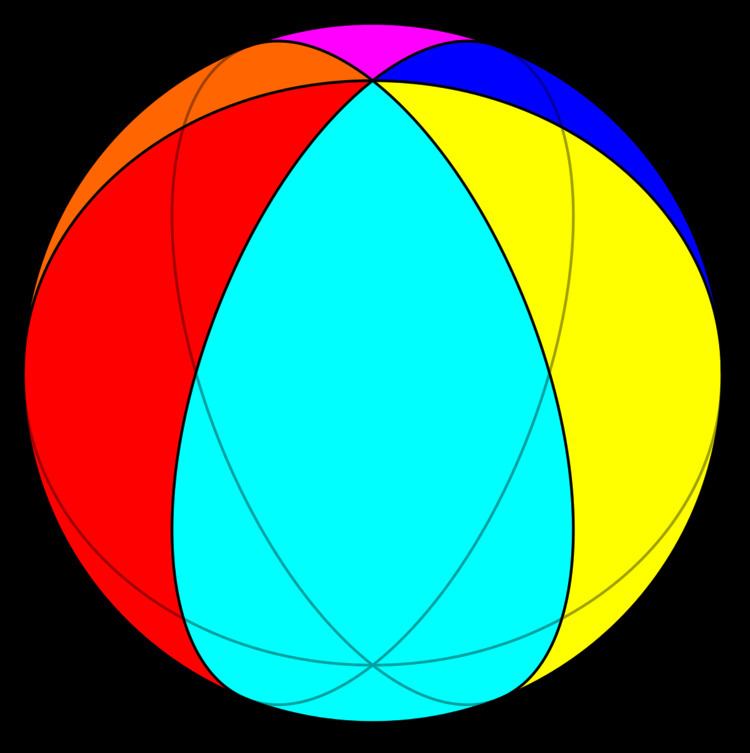 | ||
In mathematics, a regular map is a symmetric tessellation of a closed surface. More precisely, a regular map is a decomposition of a two-dimensional manifold such as a sphere, torus, or real projective plane into topological disks, such that every flag (an incident vertex-edge-face triple) can be transformed into any other flag by a symmetry of the decomposition. Regular maps are, in a sense, topological generalizations of Platonic solids. The theory of maps and their classification is related to the theory of Riemann surfaces, hyperbolic geometry, and Galois theory. Regular maps are classified according to either: the genus and orientability of the supporting surface, the underlying graph, or the automorphism group.
Contents
Overview
Regular maps are typically defined and studied in three ways: topologically, group-theoretically, and graph-theoretically.
Topological approach
Topologically, a map is a 2-cell decomposition of a closed compact 2-manifold.
The genus g, of a map M is given by Euler's relation
Group-theoretical approach
Group-theoretically, the permutation representation of a regular map M is a transitive permutation group C, on a set
Graph-theoretical approach
Graph-theoretically, a map is a cubic graph
A map M is regular iff Aut(M) acts regularly on the flags. Aut(M) of a regular map is transitive on the vertices, edges, and faces of M. A map M is said to be reflexible iff Aut(M) is regular and contains an automorphism
Examples
The following is a complete list of regular maps in surfaces of positive Euler characteristic, χ: the sphere and the projective plane..
The images below show three of the 20 regular maps in the triple torus, labelled with their Schläfli symbols.
Toroidal polyhedra
Regular maps exist as torohedral polyhedra as finite portions of Euclidean tilings, wrapped onto the surface of a duocylinder as a flat torus. These are labeled {4,4}b,c for those related to the square tiling, {4,4}. {3,6}b,c are related to the triangular tiling, {3,6}, and {6,3}b,c related to the hexagonal tiling, {6,3}. b and c are whole numbers. There are 2 special cases {b,0) and (b,b) with reflective symmetry, while the general cases exist in chiral pairs (b,c) and (c,b).
Regular maps of the form {4,4}m,0 can be represented as the finite regular skew polyhedron {4,4 | m}, seen as the square faces of a m×m duoprism in 4-dimensions.
Here's an example {4,4}8,0 mapped from a plane as a chessboard to a cylinder section to a torus. The projection from a cylinder to a torus distorts the geometry in 3 dimensions, but can be done without distortion in 4-dimensions.
In generally regular toroidal polyhedra {p,q}b,c can be defined if either p or q are even, although only euclidean ones above can exist as toroidal polyhedra in 4-dimensions. In {2p,q}, the paths (b,c) can be defined as stepping face-edge-face in straight lines, while the dual {p,2q} forms will see the paths (b,c) as stepping vertex-edge-vertex in straight lines.
